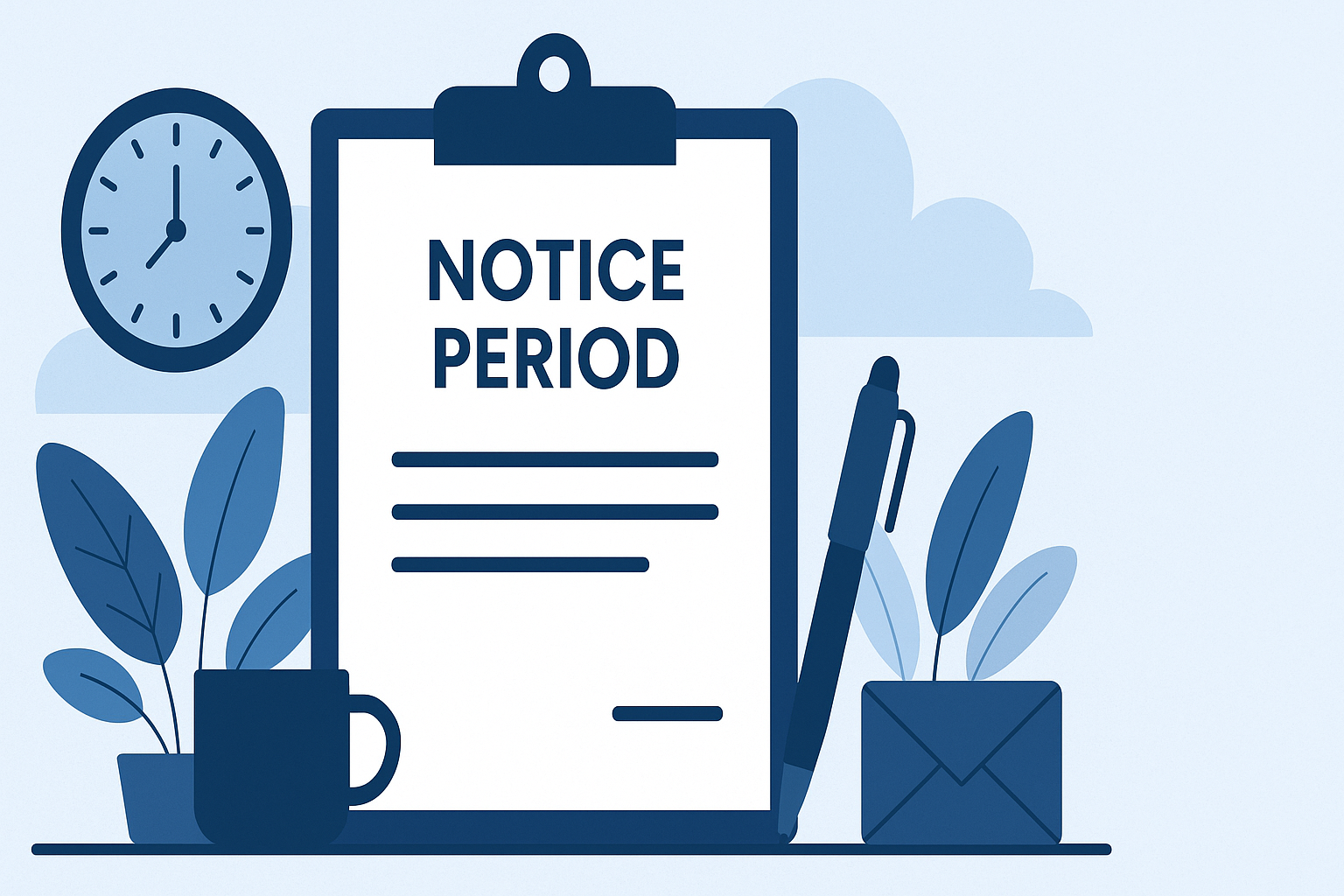Managing leave for part-time employees can be challenging for many businesses. Without the right tools, tracking leave entitlements, managing varying work schedules, and preventing scheduling conflicts can become time-consuming and prone to errors. Effective absence management is crucial in this context, as it allows businesses to handle all types of leave—from sick days to holiday entitlements—efficiently and in one centralized system. With the right leave management software for part-time employees, businesses can streamline these processes and increase efficiency.
In this post, we’ll discuss why using leave management software for part-time employees—like ScheduleLeave—is essential for any small business with part-time staff, and how it can help solve common challenges.
What is Leave Management Software?
Leave management software is a digital tool designed to automate and streamline the process of managing employee leave requests and approvals. This type of management software tracks various types of leave, including vacation, sick leave, and personal days, ensuring that all leave requests are handled efficiently. By simplifying the application and approval process, leave management software provides real-time visibility into employee availability, significantly reducing administrative tasks. This system helps maintain accurate leave records, ensures fair and consistent leave management, and assists in workforce planning by keeping track of absences. Implementing the right leave management software can transform how businesses handle leave, making the process more transparent and efficient.
Challenges of Managing Leave for Part-Time Employees
While part-time employees are entitled to leave like full-time workers, managing this can be tricky. Some common issues include:
-
Complex Calculations: Leave entitlements for part-time employees are pro-rated based on the hours they work, making manual calculations difficult and error-prone.
-
Scheduling Conflicts: It can be hard to track who is off, especially when managing varying shifts, leading to potential overlaps in leave requests.
-
Limited System Flexibility: Many traditional systems are designed primarily for full-time staff, leaving part-time employees underrepresented. Implementing leave management systems can address these limitations by streamlining the process, reducing errors, and improving overall organizational efficiency.
How ScheduleLeave Simplifies Leave Management for Part-Time Employees
Using ScheduleLeave, a leading leave management software for part-time employees, businesses can overcome these challenges with ease. ScheduleLeave offers comprehensive leave management features that streamline the process of managing all types of employee leave, including annual leave and sick leave, thereby improving organization efficiency and reducing administrative burdens. ScheduleLeave offers flexible and efficient leave management solutions designed specifically for part-time employees.
1. Automated Leave Calculations
ScheduleLeave automatically prorates leave entitlements based on part-time hours, including annual leave. Whether an employee works two or four days a week, their leave allowance is calculated accurately. This ensures that employees receive the correct amount of leave without manual calculations.
2. Visibility into Leave Schedules
ScheduleLeave includes a shared leave calendar, allowing managers and employees to view who is taking time off, including holiday requests, making it easier to prevent scheduling conflicts. This is especially helpful for part-time employees with irregular schedules.
3. Customizable Leave Policies
Every business has different rules regarding leave, especially for part-time staff. ScheduleLeave allows businesses to set up custom leave policies, ensuring fair and accurate management of leave entitlements.
4. Employee Self-Service
Part-time employees can view their leave balance and submit a leave request using ScheduleLeave’s self-service portal. This transparency reduces HR’s administrative workload and provides clarity for employees.
5. Automatic Notifications and Approvals
Managers receive alerts when leave requests are submitted, enabling them to approve or reject requests quickly. ScheduleLeave also flags any potential scheduling conflicts to streamline the approval process.
6. Mobile App / Version
Many leave management systems offer mobile access, allowing employees to request time off on the go. This feature is particularly beneficial for part-time employees who may not have regular access to a desktop computer. With mobile access, employees can quickly submit leave requests, check leave balances, and receive real-time notifications about the status of their requests. This flexibility ensures that employees can manage their leave efficiently, regardless of their location or schedule. Additionally, mobile access supports better communication between employees and managers, as managers can promptly approve or deny requests through their mobile devices. This seamless integration of mobile technology into leave management systems enhances the overall efficiency and user experience, making it easier for businesses to accommodate the needs of their part-time workforce.
Leave Types and Management
Effective leave management involves handling various types of leaves, each with its own set of rules and entitlements. Here are some common types of leave and how they are managed:
-
Annual Leave: Annual leave is a type of leave that employees are entitled to take each year for vacation, relaxation, or personal reasons. Managing annual leave involves tracking leave balances, ensuring fair distribution of leave days, and preventing scheduling conflicts. A robust leave management system can automate these processes, making it easier to manage annual leave for part-time employees.
-
Sick Leave & Employee Absences: Sick leave allows employees to take time off when they are ill or injured. It can be used for doctor’s appointments, hospitalization, or recovery. Effective management of sick leave ensures that employees can take the necessary time off without affecting their entitlements. Leave management software can track sick leave balances and provide real-time updates, ensuring transparency and fairness which may relate with any performance management concerns.
-
Maternity/Paternity Leave: Maternity and paternity leave are types of leave that employees can take when they are expecting a child or have recently given birth. This leave is crucial for bonding with the child, recovery, and childcare. Managing maternity/paternity leave involves understanding legal entitlements and ensuring that employees receive the appropriate amount of leave. A leave management system can help automate these calculations and ensure compliance with regulations.
-
Bereavement Leave: Bereavement leave is a type of leave that employees can take when they have experienced a loss, such as the death of a family member or friend. Managing bereavement leave involves providing employees with the necessary time off to grieve and handle personal matters. A leave management system can track bereavement leave requests and ensure that employees receive the support they need during difficult times.
Promoting Well-being in the Workforce
Promoting well-being in the workforce is essential for employee productivity, job satisfaction, and overall health. Here are some ways to promote well-being in the workforce:
-
Flexible Work Arrangements: Offering flexible work arrangements, such as telecommuting or flexible hours, can help employees balance their work and personal life. This flexibility can reduce stress and improve job satisfaction, leading to a more engaged and productive workforce.
-
Employee Wellness Programs: Implementing employee wellness programs, such as fitness classes, mental health resources, or wellness challenges, can help employees manage stress and improve their overall health. These programs demonstrate that the organization values employee well-being, which can boost morale and loyalty.
-
Leave Management: Effective leave management is crucial for promoting well-being. Allowing employees to take time off when they need it, whether for vacation, illness, or personal matters, can reduce burnout and improve job satisfaction. A robust leave management system can ensure that leave requests are handled efficiently and fairly, providing employees with the support they need to maintain their well-being.
Implementing Leave Management Software
Implementing leave management software can be a complex task, but it can also have numerous benefits for employees and employers. Here are some steps to implement leave management software:
-
Choose the Right Software: Selecting the right leave management software is crucial. Look for a solution that meets your organization’s needs, is user-friendly, and offers the necessary features to manage leave effectively. Consider factors such as scalability, integration with other HR systems, and customer support.
-
Configure the Software: Once you have chosen the software, configure it to align with your organization’s leave policies and schedules. This includes setting up leave types, entitlements, approval workflows, and notifications. Proper configuration ensures that the software operates smoothly and meets your organization’s specific requirements.
-
Train Employees: Training employees on how to use the leave management software is essential for successful implementation. Provide comprehensive training sessions and resources to ensure that employees understand how to submit leave requests, check leave balances, and navigate the system. Effective training can enhance user adoption and satisfaction.
-
Monitor and Evaluate: After implementing the software, continuously monitor its performance and gather feedback from users. Evaluate whether the software is meeting your organization’s needs and identify any areas for improvement. Regular monitoring and evaluation can help you optimize the system and ensure that it continues to provide value to your organization.
By following these steps, you can successfully implement leave management software and reap the benefits of streamlined leave management processes, improved employee satisfaction, and enhanced operational efficiency.
Costs & Pricing for Leave Management Software
When considering leave management software, it’s important to understand the different pricing tiers available to suit various organizational needs and budgets without the hidden fees, especially for small business trying to keep costs down. Typically, plans range from free versions with basic features to premium options that offer advanced tools for larger or more complex HR teams. Free versions might include essential functionalities like basic leave tracking and employee self-service portals, while premium plans often provide additional features such as detailed reporting, analytics, and integration with other HR systems. Understanding what each plan includes and its associated costs can help you select the right leave management software for your organization, ensuring you get the best value for your investment.
Leave Reporting and Analytics
One of the standout features of leave management software is its ability to provide detailed reporting and analytics. These features enable organizations to make informed decisions by tracking employee leave patterns and identifying leave trends. With comprehensive leave reporting, administrators can plan for peak periods and manage workforce availability more effectively. The system offers a centralized view of employee leave management, allowing for easy access to detailed data on leave patterns and trends. This level of insight is invaluable for maintaining operational efficiency and ensuring that leave policies are applied consistently across the organization.
Benefits of Using ScheduleLeave for Part-Time Employees
Adopting ScheduleLeave, a highly efficient absence management software for part-time employees, offers several benefits for businesses:
-
Accurate Leave Tracking / Vacation Tracker: Automated calculations ensure accurate leave entitlements as well as tracking employee attendance.
-
Increased Visibility: The shared calendar provides real-time updates on leave schedules, reducing scheduling conflicts with direct integration into Outlook Calendar and Google Calendar.
-
Fast Approval Process For Time Off Requests: Automatic notifications streamline leave approval, approving leave with just a few clicks, reducing admin overhead.
-
Fair Treatment: Custom policies ensure fairness in leave entitlement whilst making it easier to manage absence.
-
Efficient Management: Annual leave requests are streamlined and take into consideration accurate annual leave entitlement and allowance usage based on part-time working schedules.
-
Public Holidays: Out of the box tracking of bank/public holidays which are always kept up to date so you don’t have to worry about accounting for these with each leave request booked.
-
Paper Reduction: Avoid the need for any paper form approval, cutting down paper usage.
Choosing the Right Leave Management Features for an All In One Solution
Selecting the right leave management solution can significantly impact your company’s efficiency and employee satisfaction. When evaluating different options, consider the following factors:
-
Core Functionalities: Look for software that offers automated leave tracking, employee self-service portals, customizable leave policies, real-time reports and analytics, integration with other HR systems, and calendar syncing for easy visibility of employee availability.
-
Additional Standout Features: Consider software that offers unique features such as burnout indicators, Slack plugins, and mobile apps.
-
Usability: Choose software that is user-friendly and easy to navigate.
-
Onboarding: Look for software that offers a smooth onboarding process and provides adequate support.
-
Customer Support: Consider software that offers excellent customer support and has a good reputation.
-
Value for Price: Evaluate the cost of the software and ensure it aligns with your organization’s budget.
-
Customer Reviews: Read reviews adn case studies from other customers to get an idea of the software’s performance and reliability.
By considering these factors, you can find the best leave management software that meets your organization’s unique needs and requirements. The right leave management solution which has all the features you need, will not only streamline your leave management process, reduce the hr admin burden but also enhance overall employee satisfaction and operational efficiency.
Conclusion: Improve Leave Management with ScheduleLeave
Managing leave for part-time employees is simple with the right leave management software for part-time employees. ScheduleLeave automates calculations, prevents scheduling conflicts, and increases transparency, ensuring smooth operations for your business. Try ScheduleLeave’s free 30-day trial today and see how it can help streamline your leave management process.




